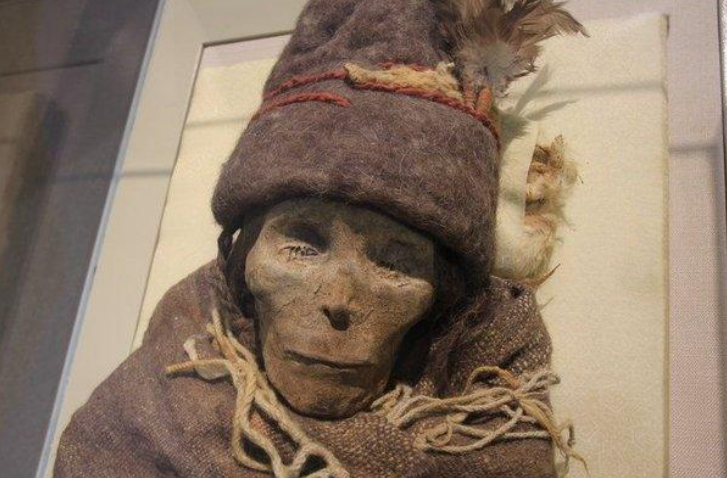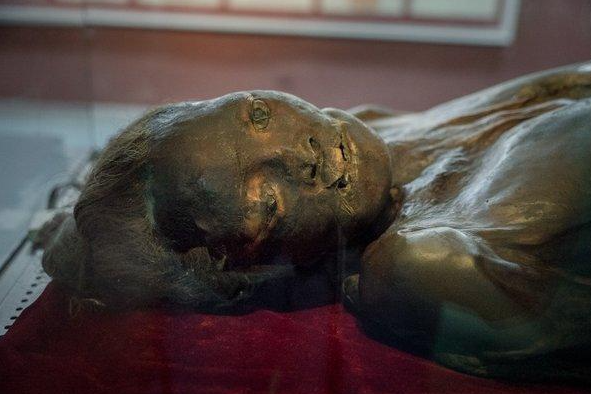
Revealing The Mysteries Of The Ancient Tarim Mummies: An Intriguing Exploration
The Tarim mummies are a sequence of naturally mummified corpses found in the Tarim Basin in present-day Xinjiang, China, which date from 2100 BC to the primary centuries BC. The primary our bodies had been found in the early twentieth century.
The Beauty of Xiaohe (ca. 1800-1500 BCE) is extraordinarily nicely preserved. Her physique was found wrapped is a large woolen cloak. When the quilt of her boat coffin was eliminated, she was found wearing a magnificent white hat.
 Around 330 graves have been found in the region, and although the individuals who originally dug them have not been identified, their DNA exhibits they’ve Eastern European, Central Asian, and Siberian heritage.
Around 330 graves have been found in the region, and although the individuals who originally dug them have not been identified, their DNA exhibits they’ve Eastern European, Central Asian, and Siberian heritage.

These tombs include adults and children, the vast majority of the coffins had been product of wooden, and had been formed like boats, buried upside down.

The tomb of two corpses, a couple, buried collectively. The woman was buried alive.
Garments and jewellery found in the tomb had been additionally buried alongside the mummies, in small baskets, and the our bodies had been wrapped in cowhide and wool. This prevented sand from getting inside the corpses.

The “witches” of Subeshi put on very tall, pointed black hats that resemble the iconic headgear of their sisters in medieval Europe. Subeshi, dated to between the 4th and 2nd centuries BCE, is positioned in a excessive gorge just to the east of the important metropolis of Turfan. Historian and author Adrienne Mayor has recently suggested that the single heavy glove worn by one of the feminine mummies could indicate that she hunted with a raptor such as a golden eagle.
The Witches of Subeshi had been buried wearing striking hats. (PH๏τograph by Jeffery Newbury)
In addition to the wooden coffins, four clay-covered rectangular coffins had been additionally found, surrounded by stakes.

The well-preserved clothing is similar to Western European types.

The Tarim Basin is one of probably the most distant (removed from oceans and seas along whose littorals early humans travelled) and least populated locations on Earth.
During the Paleolithic and Neolithic intervals (earlier than 2000 BCE), there’s no evidence of permanent settlement in the Tarim Basin.

The world has sufficient sunshine, and the warmth can be concentrated in the basin, so the common temperature in this space could be very excessive.
According to statistics, about a 3rd of the times in annually, the common temperature is above 35 levels Celsius, and on forty days the common temperature is above 40 levels Celsius.
In recent years, there has even been a high-temperature report of 49.6 levels Celsius.
The precipitation right here could be very small, only a couple of ten millimeters per yr.

The tombs are coated with a layer of sentimental, ventilated sand. Shaman from Yanghai cemetery, ca. 950-900 BCE
In different phrases, the tomb right here is like an oven in a laboratory, which can quickly take away water from the ᴅᴇᴀᴅ our bodies buried right here. Most micro organism cannot survive for too long in a excessive temperature and dry environment. Without the participation of micro organism, the corpse will only be weathered, but will not rot.

This mummy from Niya cemetery has well-preserved blonde braids. Discover additionally the blue glᴀss beads draped over her face.

Chärchän Man was recovered from a tomb near the village of Zaghunluq in Qiemo County, in the central portion of the southern fringe of the Tarim Basin. The tomb is situated on a plateau with extraordinarily saline soil, which enabled excellent preservation of textiles from the extensive cemetery. This website is considerably extra recent than the 2 discussed above and dates to around 600 BCE.


Chärchän Man
In the ancient Egyptian period, only the remains of some folks such as pharaohs and sacrifices had been eligible to be made into synthetic corpses. In contrast right here the desert local weather handled everyone the identical. Subsequently, the number of mummies in this space is much extra than that of ancient Egyptian mummies.
According to archaeologists, there are at most thousands of well-preserved mummies in the world.
Yingpan Man

Yingpan Man must be counted among the best-dressed men of antiquity. Almost 6’ 6” tall, Yingpan Man’s face is roofed by a white masks with a strip of gold foil throughout the brow. Yingpan Man’s amazing outfit, with its Greco-Roman motifs (including putti or cherubs and bulls with laurel wreaths around their midsection) and extravagant embroidery, marks him as a man of far-reaching connections.
The “Hami fragment” of material resembles plaids from ancient central Europe. v
Textiles, such as this hat and blanket (or cloak) on a mummy are preserved in the dry, chilly local weather of the Tarim Basin.

The Beauty of Loulan was buried wearing a heat cloak or shroud, a hat, and boots. Different grave items included a wooden comb, a basket, and a winnowing tray.




